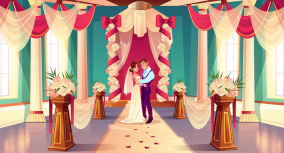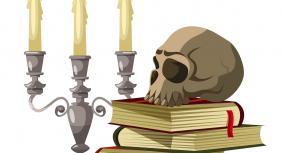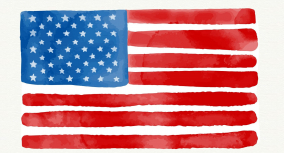Have you ever asked yourself why some books are so compelling that you keep thinking about them even after you have finished reading? Well, of course, it can be because of a unique plotline or complex characters. However, most of the time, it is the theme that compels you.
A literary theme is a central or underlying idea of the story. This article by our custom writing team will explain what a theme is, introduce some common theme types, and give examples of main ideas from literature.
🤔 What Is a Theme in Literature: Central Idea Definition
A central idea or theme can be defined as a universal truth or dominant impression of a story. It ties together all elements of fiction that the author uses to narrate the events of the book.

Here are some essential features associated with themes:
- They are often related to the human condition.
- They often deal with a specific group of people.
- They usually deal with abstract concepts and ideas.
- They tend to be universal.
- They don’t have to hold true outside the story.
- They unfold through characters’ personalities or actions.
- There is usually more than one theme in every story.
Theme Is Not…
A lot of time, a theme can be confused with similar notions. Here is the list of what a theme is not:
- the purpose of a literary work;
- the story’s moral;
- something that can be expressed in one word;
- the conflict in the story.
Theme vs. Moral
Even though the theme and the moral are overlapping concepts, they are still two different things. While the theme is the story’s main idea, the moral is the teaching that is conveyed through the story’s elements.
For example, in Francis Scott Fitzgerald’s The Great Gatsby, the moral is that the American Dream is unattainable. The story’s central idea is a materialistic, money-driven society and its effect on people’s lives.
Theme vs. Message
The theme is also often confused with the message of the story. The main difference between the two is that the message illustrates a specific situation while the theme refers to a larger context. In other words, the message is the story’s theme in action.
For example, in The Great Gatsby, the message would be that a chase after money and the desire to be accepted by society will not bring love or happiness.
Theme vs. Plot
The main difference between the plot and the theme is that the plot is the order of events, whereas the theme is the story’s central idea. The plot is synonymous with the storyline. It tells what happens in the story from the begging to the end.
For instance, the plot of The Great Gatsby is all the events described in the book, including Jay Gatsby’s tragic fate.
Themes vs. Topics
The terms “topic” and “theme” can be confused as well. Yet, they are different concepts. A theme is the central meaning of the story, and you can understand it only after reading the whole work. A topic explains what the story is about. It is more specific than the theme.
So, in case the theme of The Great Gatsby is how materialistic society affects people’s lives, the topic is the chase after money and love.
Why Are Themes Important?
Now, let’s talk about the significance of a theme in a story. Here are some of its essential functions:
- It unites all the elements, such as plot and character development.
- It regulates and gives meaning to story elements.
- It helps to make a story relatable to the reader.
Note that the protagonist’s internal journey is also closely connected to a theme. When we see character’s growth and learn about their motivation, we begin to relate to them and their struggles. At the same time, the story itself becomes more compelling.
How to Find the Theme of a Story
To identify a theme, first make sure you are familiar with the plot, the main conflicts in the story, and the way it uses characterization. You can identify a theme easily by asking the right questions:
🎭 Common Theme Types
Now we are going to talk about common theme types. We’ll start with major and minor themes and the difference between them:
- A major theme is expressed repeatedly and is central in a literary work.
- A minor theme only briefly appears in the text. It may or may not give way to other minor themes.
Implied Theme
The author may choose how to present their ideas in the text. If the author uses implied or implicit themes in the story, the message is not expressed directly but conveyed through circumstances and the characters’ emotions.
Stated Theme
A stated theme is an opposite of an implicit one. If a theme is stated, it means that the author chooses to express it directly. For example, the theme of Pride and Prejudice is stated in the title. There is no need to determine it through the context.
Universal Themes
Universal themes are ideas that can be understood by anyone regardless of their culture or geographical location. They often deal with the human condition and fundamental human concerns. Such themes as man vs. nature or life vs. death are good examples.
Recurring Theme
A recurring theme or a motif is a unifying idea that recurs throughout the story and has a symbolic meaning. It often helps to reinforce the overall message of the book. This type of theme is conveyed in multiple ways throughout the literary work.
📚 Examples of Central Ideas in Literature
There are, of course, countless books on numerous different topics. Every author chooses what to write about and how to express their ideas in writing. However, we can try and single out some common themes. Now, let’s look at the example of some central ideas that appear in literature a lot:
Themes in American Literature
American literature combines the ideas of the past and hopes for the future; it embodies the worldview of the American people. Because of the county’s unique historical background, some themes are especially prominent in American literature. Here are some examples:
Themes in English Literature
Compared to American literature that emerged in the early 17th century, English literature has a long history. It is known for its wit, depiction of manners, and criticism of the disparity between classes. Here are some examples of common themes in English literature:
Thanks for reading through our article! We hope you found it helpful. If you did, don’t hesitate to share it with your friends. You may also want to check our articles dedicated to themes in specific books.
📖 Themes in Literature Articles
A Good Man Is Hard to Find: Themes
From this article, you will learn about the story’s core themes, such as good vs. evil, religion, and death.
Read about the themes related to the story’s main characters: loyalty & morality and resentment & racism.
This article explains the key themes of Arthur Miller’s play: the American dream, family, and betrayal & abandonment.
Mary Shelley’s Frankenstein: Themes
Read this article if you want to learn about the core themes in Frankenstein: dangerous knowledge, nature, isolation, monstrosity, and revenge.
William Shakespeare’s timeless play deals with themes such as death, revenge, corruption, and appearance vs. reality.
The novel’s themes are related to critical issues that were prominent during World War II: faith and dehumanization.
This article explores how the themes of appearance vs. reality, jealousy, racism, and women are treated in the play.
Pride & Prejudice: Themes & Ideas
The themes in Jane Austen’s brilliant novel include love & marriage, social class, and reputation.
Sir Gawain and the Green Knight: Themes
There are many themes in Sir Gawain and the Green Knight, but chivalry and honor are especially prominent.
The Canterbury Tales’ Themes: Estates Satire & Deceit
This article will help you dig deeper into The Canterbury Tales’ themes of satire and deceit.
The novel’s numerous themes include the American dream, money, social class, love, morality, and time.
The story’s central idea is the presence of a dominant tradition that overwhelms the villagers’ rationality.
This article will show you how the themes of transformation and alienation unfold within the story.
Read about the two central ideas of Maupassant’s sensational story: appearance vs. reality and greed.
The epic poem raises numerous issues that remain relevant, such as loyalty & perseverance and hospitality.
Read this article and discover the story’s central themes of gender, mental illness, and freedom.
Emily Bronte’s novel is multifaceted, but it’s primarily built around the ideas of tragic love and revenge.
🔍 References
- Identifying Themes and Literary Analysis: Bucks County Community College
- Central Idea in Literature: Austin Community College District
- What Is the Theme? Why Do We Need It?: SUNY Geneseo
- Literary Theme Analysis: Jefferson State Community College
- General Guide to Asking Complex Literary Analysis Questions: Vanderbilt University
- The Literary Element of Theme: Read Write Think
- Writing a Literary Analysis Paper: Germanna Community College












The information was quite helpful.